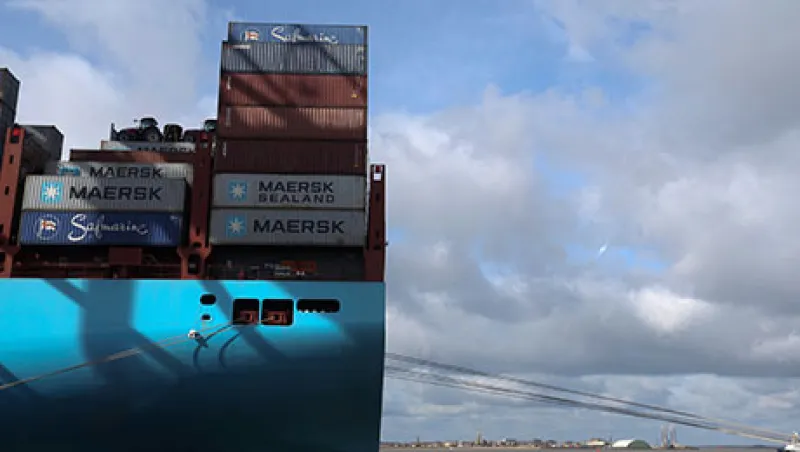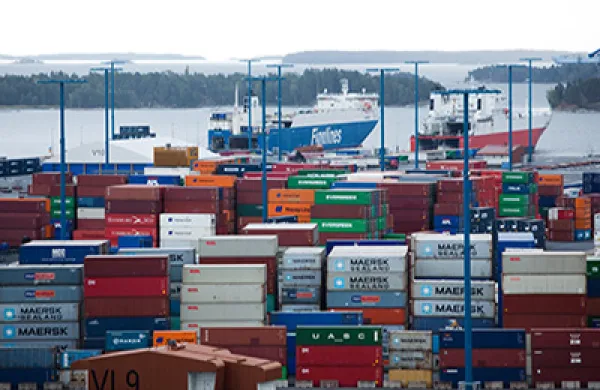Institutional investors’ constant search for yield in a low-interest environment has, of late, taken several of them out to sea.
German bank Joh. Berenberg, Gossler & Co. plans within the next few months to launch a fund, financed by German pension funds and insurers as well as investors outside Germany, to lend to shipping companies. Pension fund investors in shipping include Finland’s €37 billion ($40.35 billion) Ilmarinen, which has bought tankers and oil platform supply vessels, and Liverpool’s £6.8 billion ($10.44 billion) Merseyside Pension Fund, which has invested through a fund run by U.K.-based Marine Capital that buys and charters ships.
Skeptics wonder, however, why a number of institutional investors are so interested. Shipping charter rates are notoriously volatile: The Baltic Dry Index, which measures rates for dry-bulk cargo such as iron ore and grain, fell to a record low of 553 points in February from as high as 1,484 three months earlier. By late May it had recovered only slightly, to 634.
“Shipping is prone to cycles because the two- to three-year lag between orders and delivery means that ships always arrive at precisely the wrong point” — that is, the point when demand for shipping has started to turn down, explains Jeffrey McGee, founder and managing director of Makai Marine Advisors, a Dallas-based consulting firm.
Andrian Dacy, London-based Global Head of Maritime at JPMorgan Asset Management, says that at their 2008 peak five-year-old capesize dry-bulk vessels could be chartered out at $130,000 a day, compared with a charter rate today of about $4,000. Such dramatic variations in cash flow can make funding loans tricky.
Some investors are attracted, however, by the yield pickup. Andreas Schultheis, a member of the shipping department at Berenberg in Hamburg, believes he can achieve a spread above Bunds of 3 to 3.5 percentage points gross, or about 2.5 percentage points after costs, through Berenberg’s fund. These yields are slightly higher than the historical average for shipping loans of this level of risk, he estimates — attributing the bump to the withdrawal of many banks from shipping as they trim loan books to meet Basel III capital rules.
Even if they are higher than usual, these may not appear to be sufficiently rewarding returns for what is often considered a high-risk investment. Schultheis acknowledges that rates of default on shipping loans were high during the credit crisis, though not for Berenberg. However, he asserts that the fund will offer low-risk investing.
Berenberg, a specialist in loans to shippers with up to 70 vessels, insists on strict covenants that allow it to force a shipper to sell a vessel if a fall in its value pushes the loan-to-value ratio below an agreed level. Citing indications of strong interest from German insurers, Schultheis believes that the fund could attract as much as €1 billion. He thinks spreads may rise further in its niche market because of the lack of bank funding.
Yields can be considerably higher for investors willing to assume the asset-price risk involved in buying ships. “The five and ten-year bonds of an investment-grade multinational shipping company such as Maersk trade at between 2.5 and 3.5 percent, while a container ship bought and chartered to the same company for the same period might generate an unlevered yield of 8 percent,” says Dacy of JPMAM. Even this is a little below an average yield over the past 20 years of 10.5 percent for the global shipping fleet as a whole, according to JPMAM analysis.
Other investors like shipping as an asset play. “We took the contrarian view that shipping was one of the few areas of the market where asset values were still significantly depressed relative to other real assets, which had experienced significant price appreciation,” says Peter Wallach, head of the Merseyside Pension Fund, which first invested in shipping in 2012. “We expect a recovery as older vessels are scrapped and economic growth is maintained.”
JPMAM argues that the lack of correlation with other assets is an attractive feature of the shipping play. Between 1999 and 2013 a strategy of buying ships and then chartering them for the long term shows correlations of between –0.1 and 0.2 with a host of other investments, including global equities, global bonds, U.S. real estate and rich-country infrastructure.
However, investors still face the problem that calling the market wrong can lead to large losses. With dry-bulk charter rates at such low levels, for example, one might expect that prices are more likely to rise than fall, offering a higher yield for those investors prepared to take the risk of chartering ships out for shorter periods that do not lock in current yields.
At this point, no one is confident about where charter rates are headed, particularly in dry bulk. “We’ve been waiting for the great cyclical inflection point in dry bulk, but it has not happened, and will probably never happen, because there is so much shipbuilding capacity,” says Makai Marine’s McGee.





